Let’s head to the chilly wilderness of Alaska and explore some truly unique wildlife Alaska, known for its breathtaking landscapes and vast wilderness, is home to some of the most fascinating and rare species on the planet. From towering mountains to dense forests and icy waters, Alaska’s diverse ecosystems provide a sanctuary for a myriad of animals found nowhere else on Earth.
1. The Majestic Alaskan Malamute
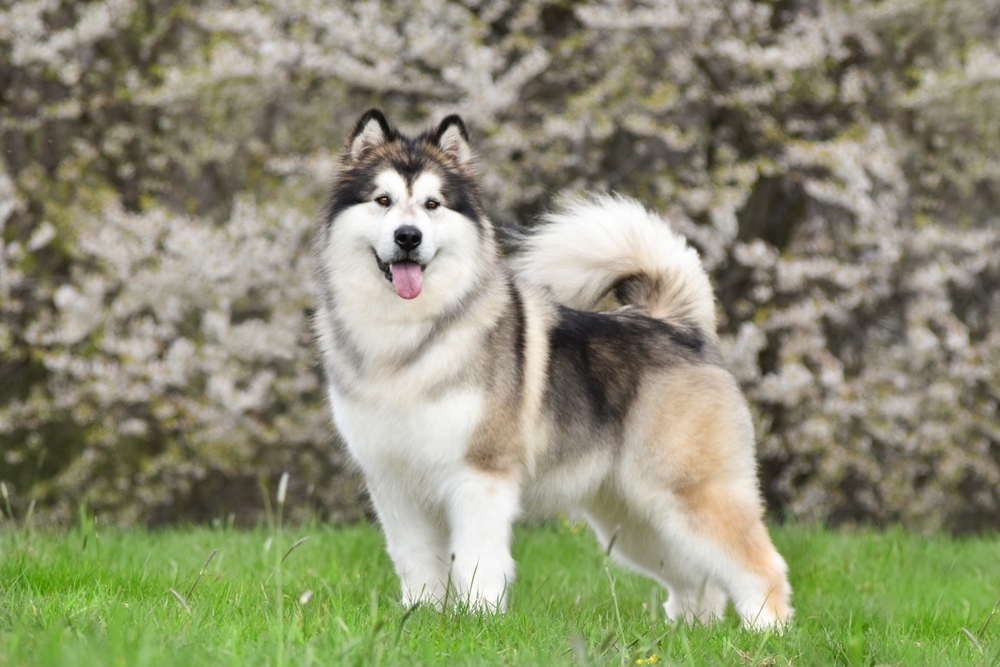
You might think of the Alaskan Malamute as just another sled dog, but this breed is far from ordinary. These large, powerful dogs have been bred for endurance and strength, making them perfect companions for life in the rugged terrain of Alaska. With their thick coats and wolf-like appearances, they are not only built to withstand the cold but also to thrive in it. According to the American Kennel Club, Malamutes have a rich history, having been used by indigenous peoples for centuries to haul heavy loads and hunt. Their loyalty and hardworking nature make them beloved members of many Alaskan communities.
Despite their working dog roots, Alaskan Malamutes are also known for their friendly and affectionate nature. They form strong bonds with their families and are great with kids, making them excellent pets as well. However, their need for exercise and mental stimulation means they’re best suited for active owners who can keep up with their energetic lifestyle. If you ever find yourself in Alaska, watching a team of these majestic dogs pull a sled through the snow is an unforgettable experience that truly captures the spirit of the Last Frontier.
2. The Elusive Alexander Archipelago Wolf
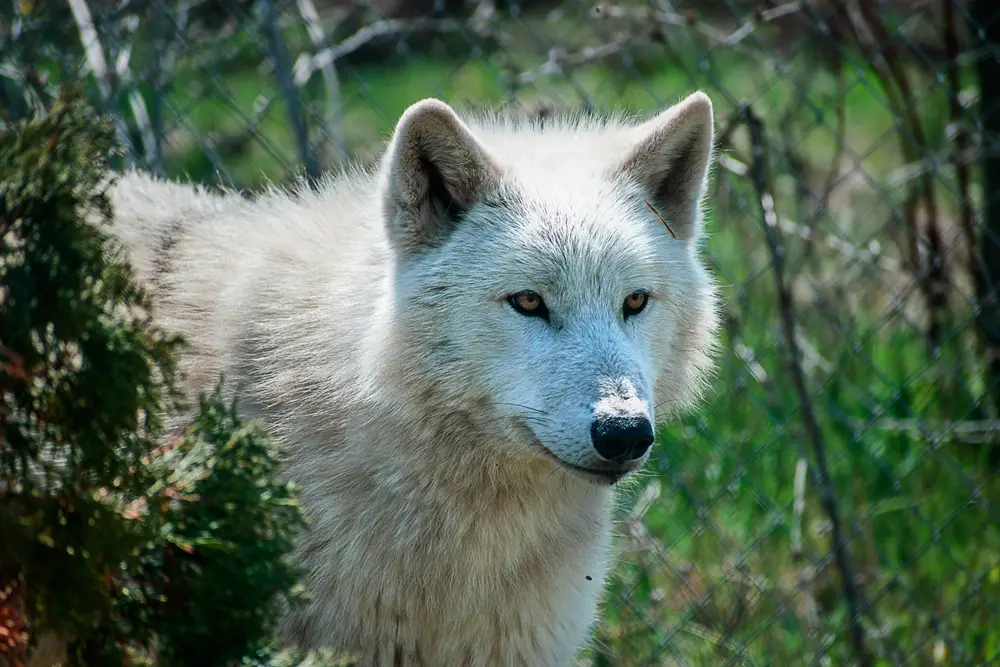
Imagine sneaking through the dense, misty forests of Alaska and catching a glimpse of a creature that few have seen: the Alexander Archipelago wolf. These wolves are a subspecies of the gray wolf and are found only in the forests of Southeast Alaska. With their unique genetic makeup, these wolves are smaller and darker than their mainland relatives, perfectly adapted to the rainforest environment they call home. As noted by the U.S. Fish and Wildlife Service, they are skilled hunters, preying on Sitka black-tailed deer, beavers, and other small mammals.
Sadly, the Alexander Archipelago wolf faces significant threats, primarily due to habitat loss and declining prey populations. Conservation efforts are underway to protect these elusive creatures, but their future remains uncertain. These wolves play a crucial role in maintaining the balance of their ecosystem, and losing them would have far-reaching consequences. If you’re lucky enough to catch a glimpse of one in the wild, you’ll be witnessing a rare and treasured part of Alaska’s natural heritage.
3. The Iconic Kodiak Bear
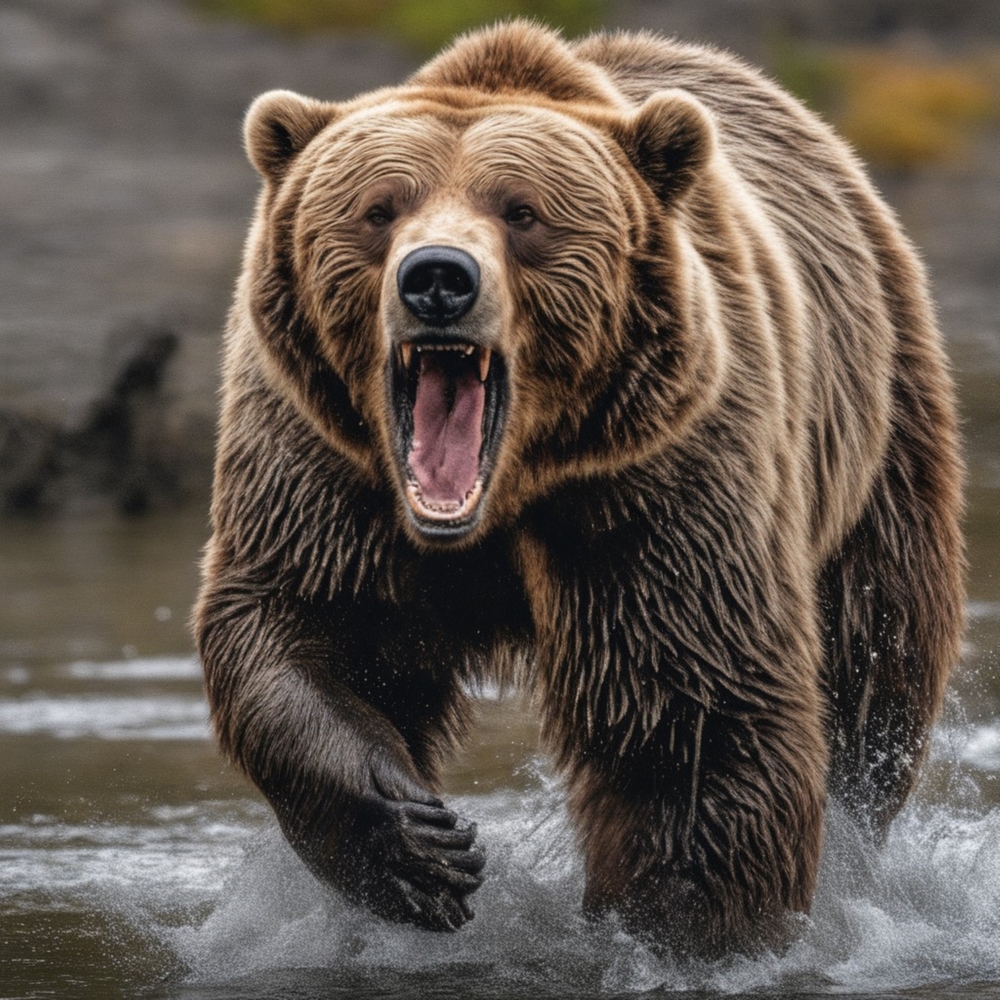
The mere mention of Kodiak bears conjures images of massive, awe-inspiring creatures roaming the expansive wilderness of Alaska. As one of the largest bear species in the world, Kodiak bears can weigh up to 1,500 pounds, with some individuals even tipping the scales at more than that. These bears are found exclusively on the Kodiak Archipelago in Alaska, where they have evolved in isolation for thousands of years. Their diet primarily consists of fish, particularly salmon, but they also eat berries, plants, and the occasional small mammal.
Kodiak bears are solitary animals, with males and females only coming together during the mating season. Despite their size and strength, Kodiak bears are generally not aggressive towards humans unless provoked or threatened. They are a vital part of the Alaskan ecosystem, helping to regulate fish populations and disperse seeds through their foraging activities. For those visiting Alaska, observing these magnificent bears in their natural habitat is a once-in-a-lifetime experience that highlights the raw beauty of the Alaskan wilderness.
4. The Spectacular Steller’s Sea Eagle
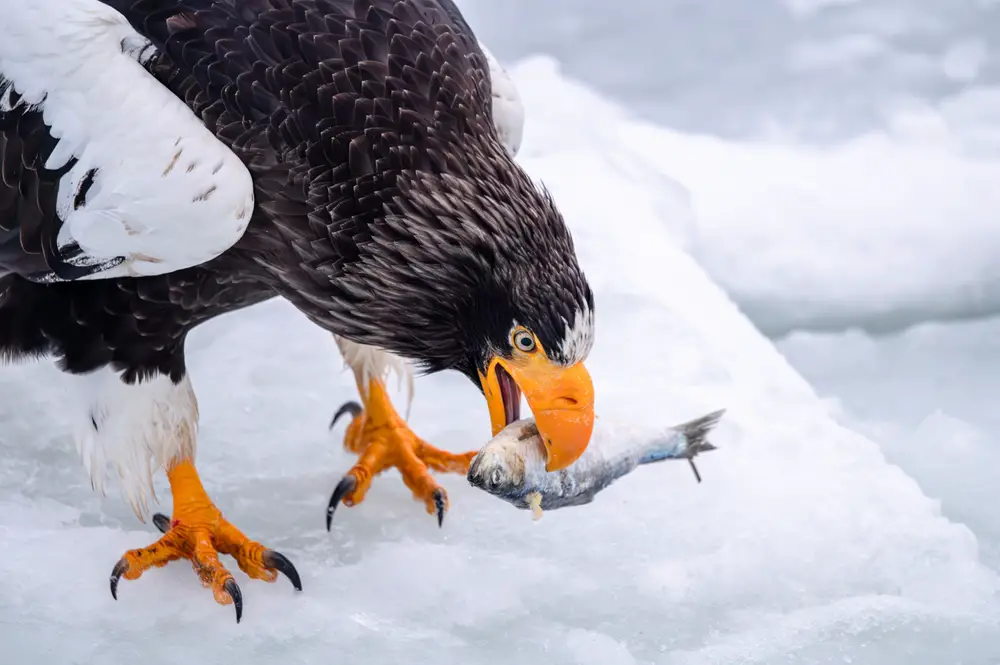
If you’ve ever seen a Steller’s sea eagle soaring majestically through the Alaskan skies, you know it’s a sight to behold. These impressive birds are among the largest eagles in the world, with wingspans reaching up to eight feet. They are found along the coastal regions of Alaska, where they hunt for fish and other marine life. With striking white and dark plumage and fierce yellow talons, they are not only powerful hunters but also stunningly beautiful creatures.
Steller’s sea eagles are known for their incredible eyesight, which allows them to spot prey from great distances. They are solitary birds, often seen perching on cliffs or trees overlooking the ocean. Conservation efforts have helped stabilize their populations, but they are still considered vulnerable due to habitat loss and pollution. Witnessing a Steller’s sea eagle in flight is not just an encounter with a magnificent bird but also a reminder of the delicate balance of Alaska’s unique ecosystems.
5. The Curious Arctic Ground Squirrel
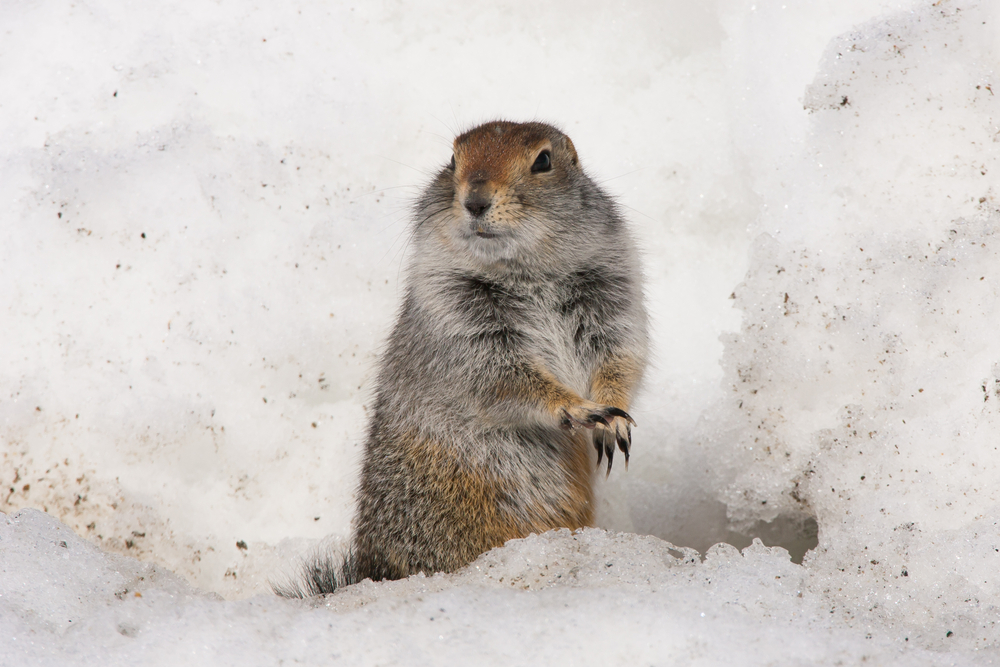
When you think of Alaska, you might not picture small, burrowing rodents, but the Arctic ground squirrel is an integral part of the region’s wildlife. These squirrels are well-adapted to the harsh Alaskan climate, with their hibernation periods lasting up to eight months. During this time, they lower their body temperatures to just above freezing, allowing them to conserve energy through the long winters. In the warmer months, they are busy foraging for food and preparing for the next winter.
Arctic ground squirrels are highly social animals, living in colonies with complex tunnel systems. They communicate with each other through a series of chirps and calls, warning of predators or signaling food sources. These squirrels play a vital role in their ecosystem, aerating the soil through their burrowing activities and serving as prey for a variety of predators. Despite their small size, Arctic ground squirrels are a testament to the remarkable adaptability of Alaskan wildlife.
6. The Graceful Kittlitz’s Murrelet
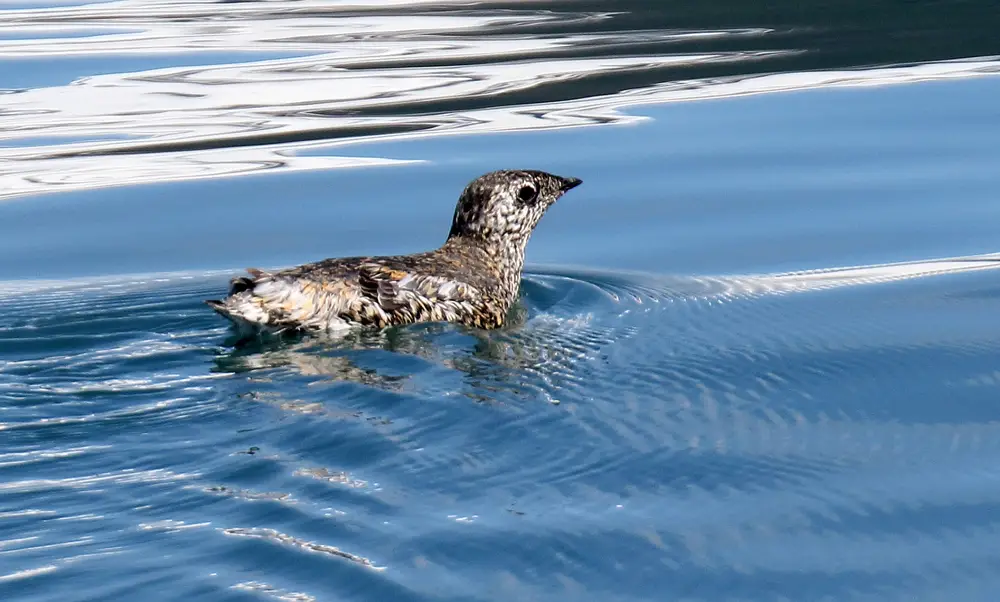
The Kittlitz’s murrelet is a small seabird that calls the remote coastal waters of Alaska home. These birds are known for their remarkable ability to blend into their rocky surroundings, thanks to their mottled brown and white plumage. They are often found nesting on steep, inaccessible cliffs, which provides them with protection from predators. Kittlitz’s murrelets primarily feed on small fish and invertebrates, diving deep into the ocean to catch their prey.
Sadly, Kittlitz’s murrelets face numerous threats, including habitat destruction and climate change, which have led to declining populations. Conservation efforts are in place to protect their critical nesting grounds, but the species remains vulnerable. Observing a Kittlitz’s murrelet in its natural habitat is a rare treat, offering a glimpse into the intricate web of life that exists along Alaska’s rugged coastlines. These birds remind us of the beauty and fragility of the natural world and the importance of preserving it for future generations.
7. The Enigmatic Alaskan Hare
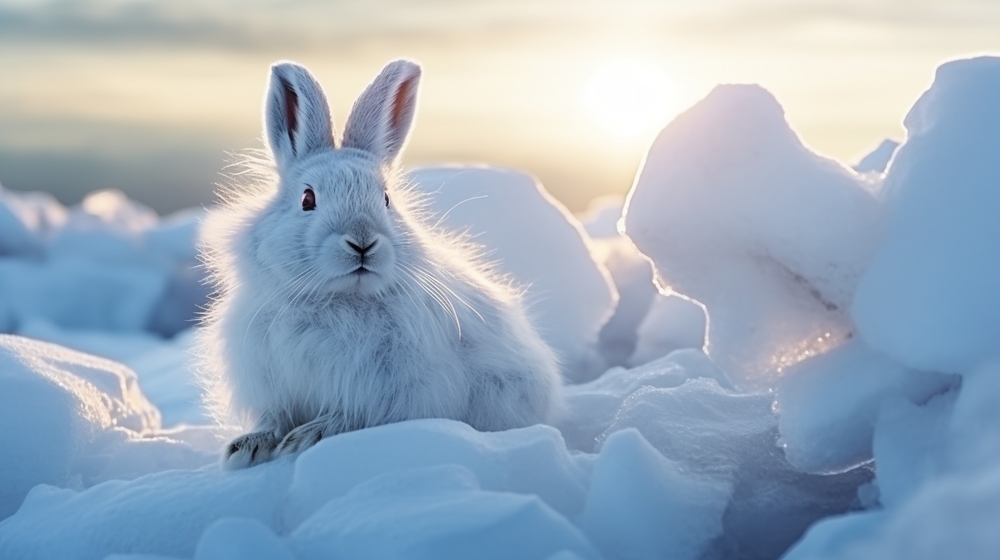
The Alaskan hare, also known as the tundra hare, is a unique species adapted to the frigid landscapes of Alaska. With their large, furry feet and thick, white winter coats, these hares are perfectly equipped to navigate the snowy tundra. They are primarily nocturnal, using their keen sense of hearing to detect predators and their strong legs to make quick escapes. Alaskan hares feed on a variety of plant materials, including grasses, leaves, and twigs.
The seasonal changes in Alaska bring about a fascinating transformation in these hares, as they molt their white fur for a brown coat in the summer months to blend in with the tundra’s changing colors. Despite their elusive nature, Alaskan hares play an important role in their ecosystem, serving as prey for a variety of predators. Encountering one of these hares in the wild is a reminder of the delicate balance of life in the Alaskan wilderness and the incredible adaptations that allow its creatures to survive.
8. The Vibrant Red King Crab
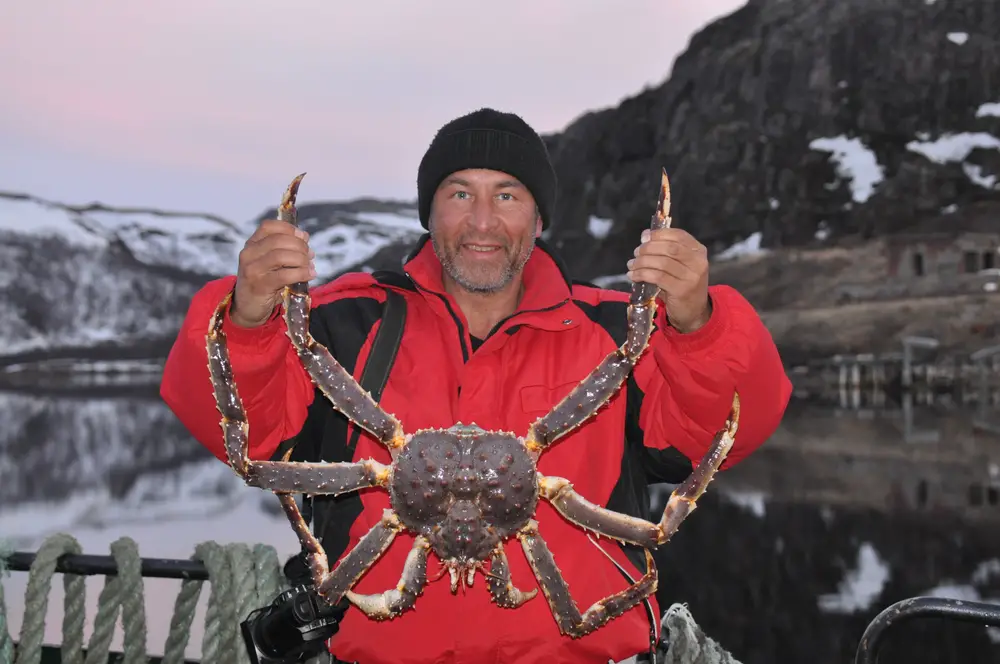
When you think of Alaskan seafood, the image of the red king crab might come to mind. These crustaceans are not only a culinary delight but also a fascinating species found in the cold waters off the coast of Alaska. Red king crabs are known for their large size and vibrant red coloration, which makes them a sought-after catch for fishermen. They inhabit the ocean floor, where they feed on a variety of plant and animal matter.
The life of a red king crab is a fascinating one, with complex molting processes that allow them to grow and reproduce. These crabs play a crucial role in the marine ecosystem, both as predators and prey. Sustainable fishing practices are important to ensure the long-term health of red king crab populations, supporting both the ecosystem and the livelihoods of Alaskan fishermen. Whether you’re enjoying them on your plate or observing them in their natural habitat, red king crabs are a true symbol of Alaska’s rich marine life.
9. The Unique Wood Frog
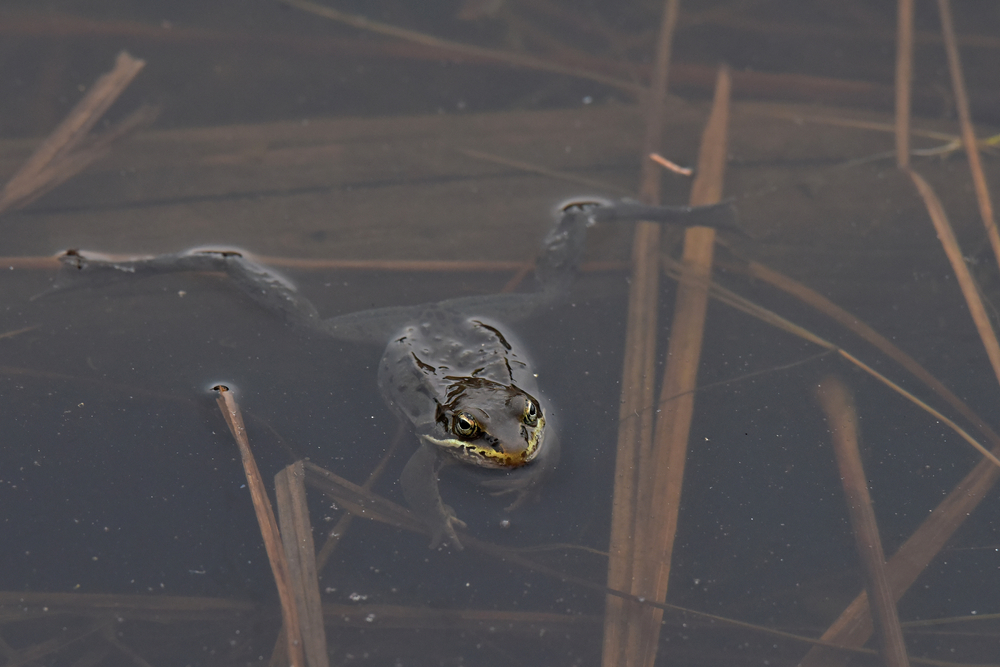
The wood frog may be small, but it holds a remarkable secret: it can survive being frozen solid. Found in the forests of Alaska, this frog has developed an extraordinary adaptation to withstand the freezing temperatures of winter. During hibernation, the wood frog’s body freezes, and its heart stops beating. Yet, come spring, it thaws out and returns to life as if nothing happened.
This incredible ability is thanks to special proteins and sugars in the wood frog’s body that prevent ice crystals from forming in its cells. It’s a survival strategy that allows the wood frog to thrive in environments that would be lethal to most other amphibians. Observing these frogs in the wild is a testament to the wonders of evolution and the resilience of life. Their story is an inspiring reminder of nature’s ingenuity and the incredible diversity of life found in Alaska.
10. The Hardy Dall Sheep
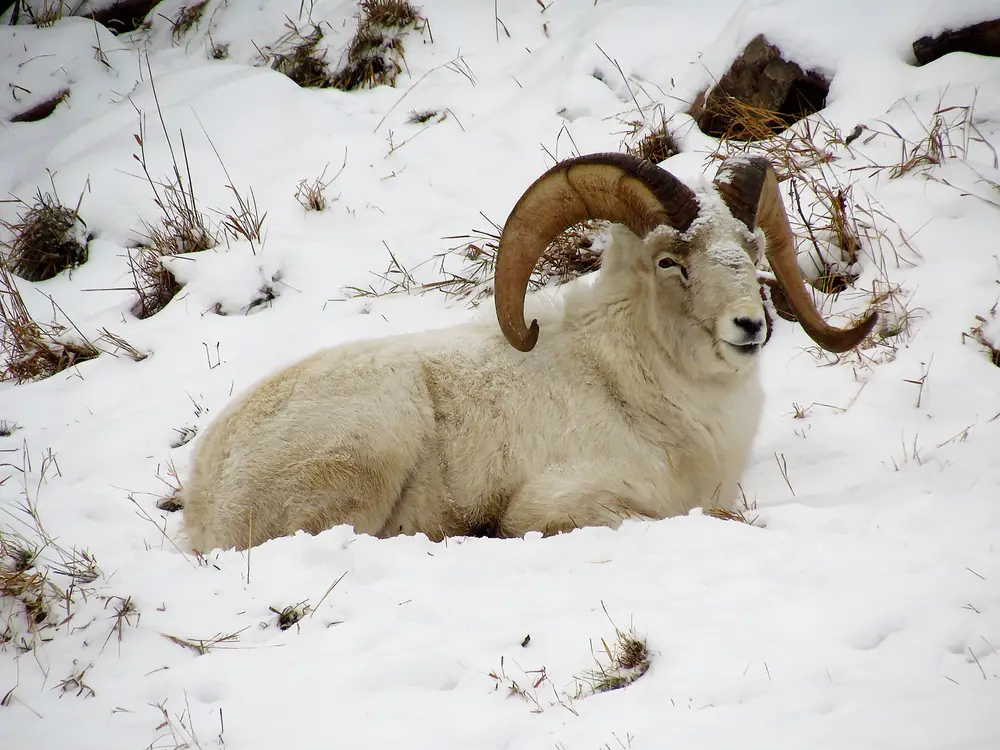
High up in the rugged mountain ranges of Alaska, you’ll find the hardy Dall sheep, expertly navigating the steep, rocky terrain. These wild sheep are known for their striking white coats and impressive curved horns, which they use in dramatic head-butting displays during mating season. Dall sheep are well-adapted to their harsh environment, with specialized hooves that provide excellent grip on slippery rocks and cliffs.
Living in such remote areas, Dall sheep primarily graze on grasses and shrubs found in their alpine habitat. They are social animals, often seen in herds, with females and young forming separate groups from males except during the mating season. Observing Dall sheep in their natural habitat is a breathtaking experience, offering a glimpse into a world where few humans venture. These sheep are a testament to the rugged beauty of Alaska and the remarkable adaptations of its wildlife.
11. The Adaptable Bearded Seal
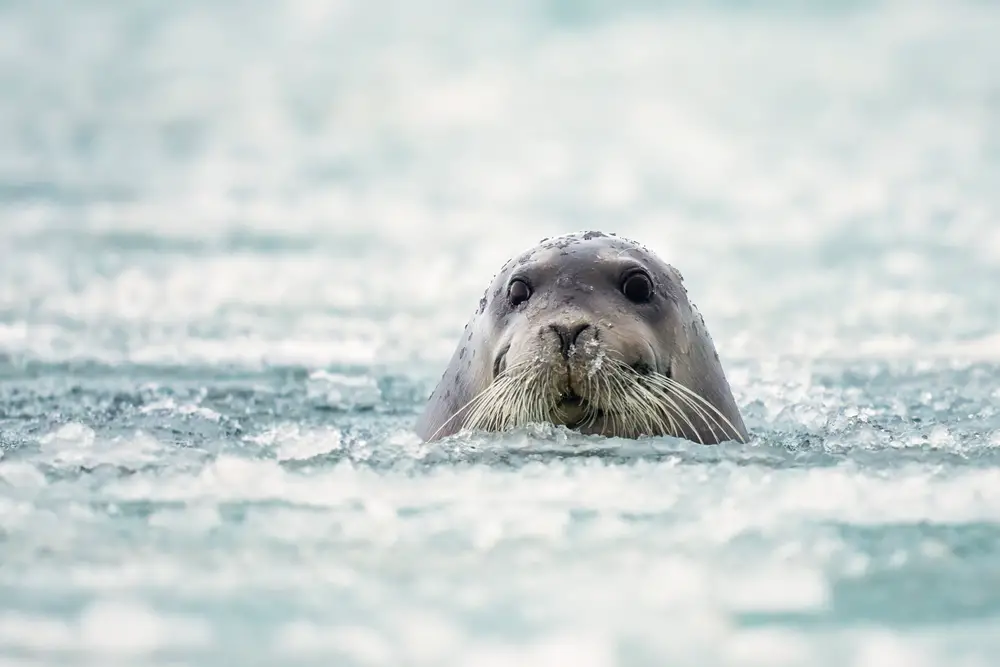
In the icy waters of Alaska, the bearded seal reigns supreme with its distinctive whiskers and robust body. These seals are perfectly adapted to life in the Arctic, with thick blubber to insulate against the cold and powerful flippers to navigate through ice-laden waters. Their name comes from their prominent whiskers, which they use to detect prey on the ocean floor, such as fish, clams, and crustaceans.
Bearded seals play a vital role in the Arctic ecosystem, serving as both predators and prey for animals like polar bears and orcas. They are known for their haunting vocalizations, which can be heard echoing through the icy landscape. Despite their adaptability, bearded seals face threats from climate change and habitat loss. Protecting these seals and their habitat is crucial for maintaining the delicate balance of life in Alaska’s Arctic waters.
12. The Mysterious Kenai Peninsula Brown Bear
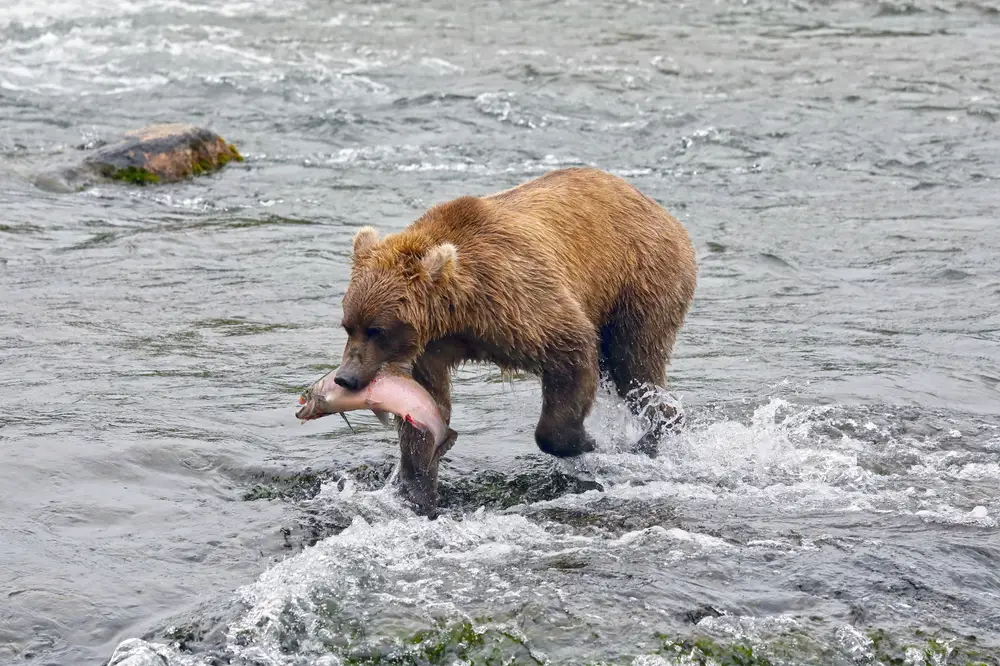
The Kenai Peninsula in Alaska is home to a unique population of brown bears, distinct from their mainland relatives. These bears are smaller and have darker coats, perfectly camouflaged in the dense forests of their peninsula home. They are highly adaptable omnivores, feeding on a diverse diet that includes fish, berries, and small mammals.
The Kenai Peninsula brown bear is a solitary creature, with individuals often having large territories that they roam in search of food. Despite their solitary nature, they are an important part of the ecosystem, helping to control prey populations and disperse seeds through their foraging activities. Observing a Kenai Peninsula brown bear in the wild is an awe-inspiring experience that highlights the raw beauty and complexity of Alaska’s wilderness. Protecting these bears and their habitat is essential to preserving the biodiversity of this unique region.
